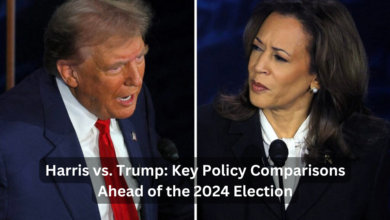Trump’s EV Policy: A Detailed Analysis of Its Impacts and Future Prospects

The electric vehicle (EV) revolution is reshaping global automotive markets, with countries and governments around the world embracing green technology and renewable energy sources. Under former President Donald Trump, the U.S. pursued a drastically different stance on electric vehicles, especially compared to other world leaders who were pushing for aggressive climate change policies. Trump’s EV policy was characterized by regulatory rollbacks, promotion of fossil fuels, and skepticism about the global climate movement.
While Trump’s stance has been both celebrated and criticized, it’s important to examine the long-term impacts of his policy on America’s automotive industry, environmental goals, and global competitiveness. In this article, we will explore the key aspects of Trump’s EV policy, how it contrasts with the Biden administration’s approach, and what the future might hold for the United States in terms of electric vehicle adoption.
Trump’s Rollback of Environmental Regulations
One of the most significant aspects of Trump’s environmental policy was his rollback of fuel efficiency standards set by the Obama administration. The Corporate Average Fuel Economy (CAFE) standards, which aimed to reduce greenhouse gas emissions from automobiles, were weakened under Trump. In March 2020, his administration finalized the Safer Affordable Fuel-Efficient (SAFE) Vehicles Rule, which lowered the annual improvement requirements for fuel efficiency from 5% to 1.5%. This decision significantly delayed the adoption of electric vehicles in the U.S., as it reduced the incentives for automakers to invest in clean energy technologies.
The rollback was framed as a move to help the auto industry by lowering the cost of vehicles and giving consumers more choice. However, critics argue that it also harmed the environment by encouraging the continued use of gasoline-powered vehicles. Additionally, by loosening these standards, the Trump administration inadvertently slowed down innovation in the electric vehicle sector, as automakers felt less pressure to develop fuel-efficient cars or zero-emission vehicles.
Impact on U.S. Auto Industry’s Competitiveness
Under Trump’s leadership, U.S. automakers were provided a temporary reprieve from stringent fuel standards, but this came at a cost. While China and the European Union pushed ahead with aggressive electric vehicle mandates and infrastructure investments, the U.S. risked falling behind in the global race for EV dominance. Automakers like Tesla, which had already committed to electric vehicles, continued to thrive, but traditional car manufacturers such as General Motors (GM) and Ford were slower to adjust, focusing more on combustion engines due to the lack of federal pressure.
Trump’s administration also favored oil and gas industries over renewable energy sectors. By prioritizing the fossil fuel industry, Trump’s policies reduced the incentives for automakers to transition toward electric vehicles. This caused foreign automakers, particularly in Europe and Asia, to surge ahead in the development and production of electric vehicles.
The U.S. auto industry, which had long been a leader in global automotive innovation, faced a risk of being outpaced by its international competitors. For instance, China, the world’s largest electric vehicle market, had already positioned itself as a dominant player in the EV battery supply chain, something the U.S. has yet to fully develop.
Trump’s Skepticism Toward Climate Change
At the heart of Trump’s EV policy was his administration’s skepticism about climate change. Trump’s withdrawal from the Paris Agreement in 2017 sent a clear signal that his administration was not prioritizing carbon reduction or green energy. Instead, the Trump administration viewed EVs as an unnecessary burden on the American economy, citing concerns about job losses in the oil and gas sector and the high cost of electric vehicle adoption.
Trump’s rhetoric often echoed concerns that climate regulations were part of a globalist agenda that would harm U.S. sovereignty. His administration often downplayed the environmental benefits of electric vehicles, focusing instead on how such technologies could hurt American workers in the short term. This anti-regulation stance was seen as a boost to traditional energy sectors like coal, oil, and gas, but at the same time, it hampered progress in the renewable energy market and EV infrastructure.
Trump vs. Biden: A Shift in EV Policy
The contrast between Trump’s EV policy and that of the Biden administration is stark. President Joe Biden has made it clear that electric vehicles are central to his administration’s strategy to combat climate change. His Bipartisan Infrastructure Law and Inflation Reduction Act allocated billions of dollars to expand EV charging networks, offer tax incentives for EV purchases, and push the U.S. toward a carbon-neutral future.
The Biden administration’s goal is to make half of all new vehicles sold in the U.S. electric by 2030. To achieve this, the government has rolled out incentives for automakers and consumers, aiming to speed up the shift from gasoline-powered vehicles to electric cars. Biden’s plan also emphasizes the development of a domestic supply chain for EV batteries, aiming to reduce dependence on foreign imports and create new jobs in the clean energy sector.
Trump’s EV policy, which largely sought to protect the traditional energy sector, stands in stark contrast to this. While Biden’s policies aim to position the U.S. as a leader in the global green economy, Trump’s approach was rooted in short-term economic gains for the fossil fuel industry.
The Future of Electric Vehicles in the U.S.
Despite Trump’s regulatory rollbacks, the shift toward electric vehicles appears inevitable. The global demand for EVs continues to rise, driven by environmental concerns, advances in battery technology, and the declining cost of electric cars. Automakers are increasingly recognizing the potential of the EV market, with companies like Tesla, Rivian, and Lucid Motors leading the way in the U.S.
In the coming years, the U.S. will need to catch up with global EV leaders like China and Germany. If the country fails to invest in electric vehicle infrastructure and incentivize clean energy development, it risks falling behind in the race for technological innovation and climate leadership.
Economic Impacts of Trump’s EV Policy
One of the key arguments in favor of Trump’s EV policy was that it would protect American jobs, particularly in the oil and gas industry. However, this approach may have been shortsighted. While the fossil fuel sector remains a significant employer, the clean energy sector is one of the fastest-growing industries in the U.S. By focusing on traditional energy, Trump’s policies arguably delayed the growth of the EV market, which could have provided new jobs and economic opportunities.
The Biden administration has already taken steps to reverse many of Trump’s policies, and by focusing on electric vehicles, the U.S. could see a significant economic boost in the form of job creation in manufacturing, renewable energy, and infrastructure development.
Global Perception and Trade Relations
Trump’s isolationist policies and America First rhetoric also impacted the global perception of the U.S. as a leader in green energy. By rolling back environmental regulations and promoting fossil fuels, the U.S. under Trump was seen as stepping back from the global push toward sustainability.
In contrast, countries like Germany and France have become leaders in green energy policies, while China continues to dominate the EV market. Trump’s policies may have given short-term relief to the fossil fuel industry, but they also risked alienating the U.S. from global trends that are increasingly focusing on sustainability and green energy.
What Lies Ahead for the U.S. EV Market?
The long-term outlook for the U.S. electric vehicle market will depend heavily on the policies of future administrations. While Trump’s policies favored traditional energy sources, the global transition to electric vehicles is now well underway. Automakers, consumers, and policymakers alike are beginning to recognize the economic and environmental benefits of electric vehicles.
In the post-Trump era, the U.S. must act quickly to rebuild its leadership in the EV sector. This will require significant investments in infrastructure, battery technology, and workforce training to ensure that the country is not left behind in the global shift toward sustainable transportation.
Conclusion
Trump’s EV policy represented a departure from the global push toward electric vehicles and sustainable transportation. While it may have provided short-term relief to the fossil fuel industry, it also risked undermining U.S. competitiveness in the global EV market. With the world moving rapidly toward green energy, the U.S. must accelerate its efforts to embrace electric vehicles and lead in the race for sustainable innovation.




